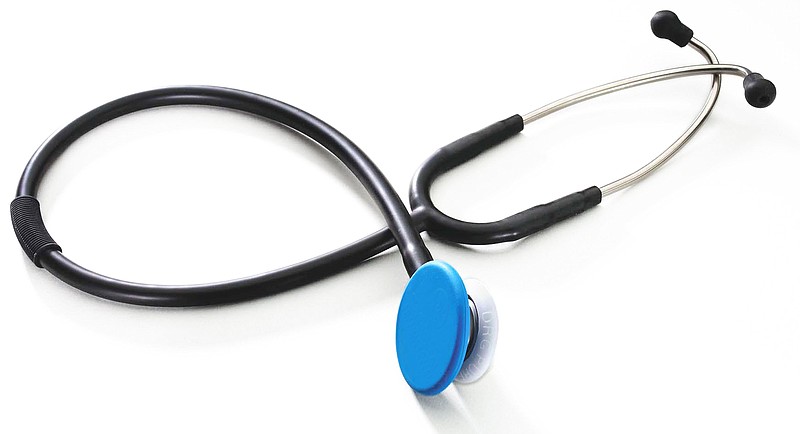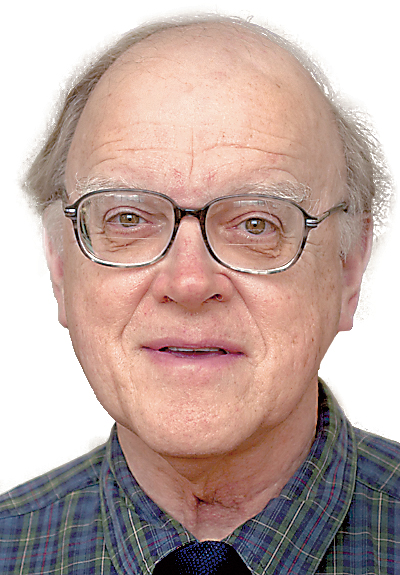From an office in T.C. Thompson Children's Hospital at Erlanger, I examined the volunteer's ear, taking advantage of magnification in visualizing his eardrum. I had never had a clearer view of the ear canal. I moved on to an inspection of his throat. A lens for examining his skin allowed 60x magnification with such resolution that I could see his fingerprint quite clearly. A stethoscope attachment permitted amplification of heart sounds. I listened to his chest. My "patient" was in Waycross, Ga.
Welcome to the world of telemedicine.
Key to my long-distance exam was a Horus HD Digital Scope. This handheld device has interchangeable accessories for different exams and can capture still or video images, which may be transmitted instantly by secure internet connection, in my case to a computer screen. The examiner and I could converse and share the same images or sounds simultaneously, though we were 350 miles apart. The digital scope is the crucial technologic link for an evolving program in school-based health care.

Children's Hospital at Erlanger leads a broad coalition that has established an expanding program of telemedicine for regional schools. Partners include the Ronald McDonald House Charities of Chattanooga, Pediatric Health Improvement Coalition of the Tennessee Valley, Ocoee Regional Health Corp., UT Family Medicine Center at Erlanger, Bradley County Public Education Foundation, Tennova Healthcare, United Way of the Ocoee Region and Georgia Partnership for TeleHealth. The goal of the program is to provide quality health care to schoolchildren, some of whom reside in remote or underserved parts of our region.
Thirty-four schools in five school systems across four counties (Bradley, Grundy, Hamilton and Polk) currently participate in the telemedicine program. The Ronald McDonald Care Mobile, which rotates among four schools and a clinic at Waterville Elementary in Bradley County, is linked to the network. Three telemedicine carts are placed in Bradley County High School's Health Occupations Classes for instructional purposes.
Imagine a fourth-grade child with an earache. His teacher directs him to the school nurse, who utilizes a fully equipped exam room. The nurse notifies a parent before proceeding with the telemedicine examination. Permission would have been granted for examinations, as needed, by the school nurse when the child entered school.
The nurse examines the child, checks his temperature and then employs the digital scope to examine his ears and throat. This initiates an online consultation with a pediatric-trained nurse practitioner who views the same images. If indicated, a prescription is sent to a pharmacy. The nurse practitioner phones the parent to discuss the visit and recommended follow-up. The child may be returned to the classroom or sent home if his condition requires this. A pediatrician at Children's Hospital and a family physician at Erlanger hospital may be consulted by video link if needed.
A child showing symptoms of a more serious illness will be referred to clinic or hospital for immediate evaluation.
All images and data from the visit are transmitted to the child's "medical home"- the clinic or facility providing continuity of care. Many children in the participating schools do not have a medical home. In that event, the telemedicine network works to arrange continuing care.
Before the launch of the telemedicine program, the school nurse would call the parent, who was likely at work. The parent might lack transportation to collect the child or be unable to leave work. As a consequence, the child might be taken to an emergency room or walk-in clinic. Alternatively, he might have to wait several days for an appointment for evaluation and treatment. The school-based health center facilitates timely, expert care.
Teachers and school staff also may be evaluated in the school clinic.
Currently, the telemedicine clinics evaluate sore throat, earache, sinus infection, flares of asthma, allergies, pink eye and head lice. These common disorders account for the majority of illnesses occurring during the school day. Well-child exams are offered for children without a medical home. Prescribed vaccines may be given in the clinic.
Timely care by a pediatric-centered team decreases absenteeism. Asthma attacks can be addressed early. Needless visits to emergency rooms are diminished.
Five requests for new telemedicine sites are pending. Future plans include adding subspecialty assessments for schools in less accessible areas.
Building a school-based, telemedicine network requires time, financial investment, building of school and community relationships and careful training of all participants in the treatment loop. The payoff is big: enhanced quality of care for schoolchildren.
Contact Clif Cleaveland at ccleaveland@timesfreepress.com.

